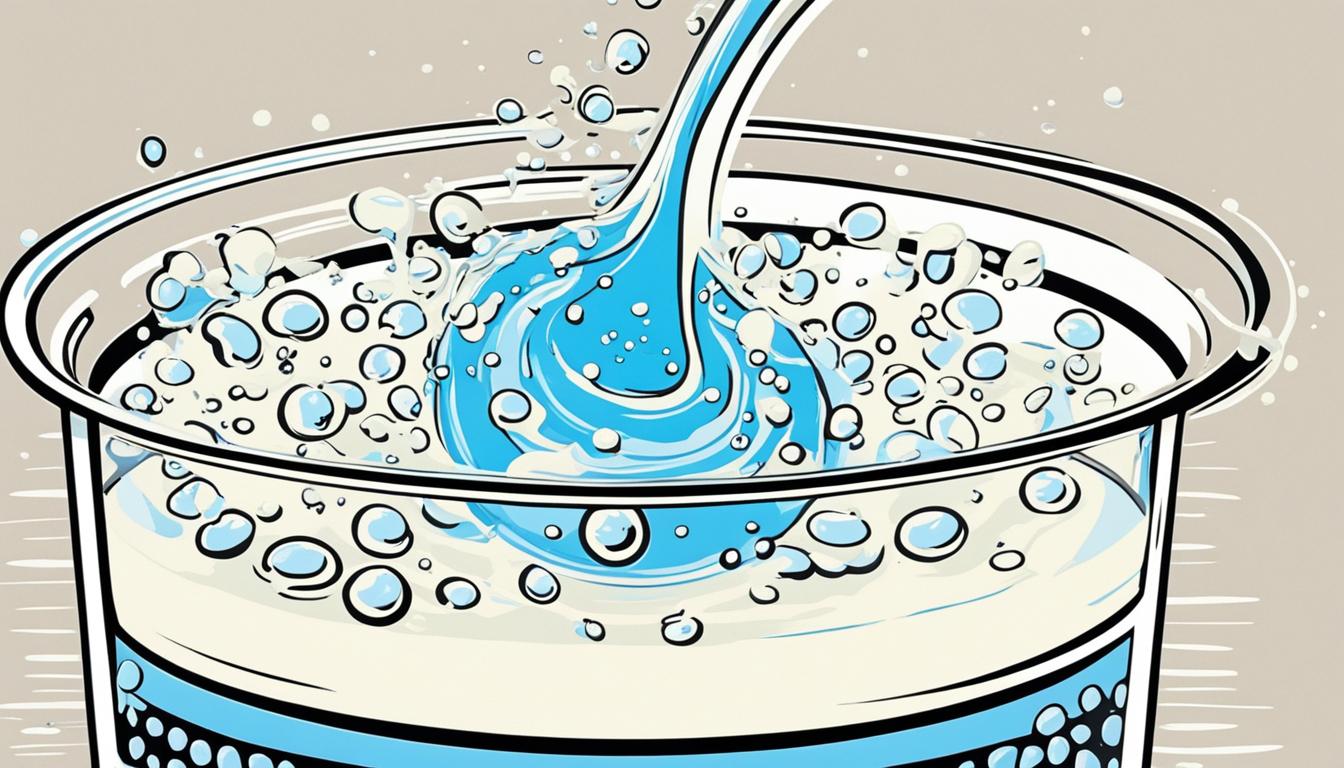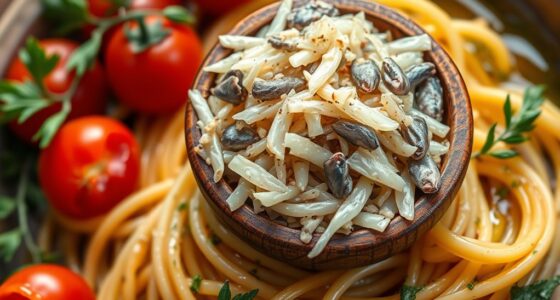Understanding cold brew and iced coffee starts with their extraction processes. Cold brew uses cold water and steeps for 12-24 hours, producing a mellow, less acidic flavor and often a higher caffeine concentration. In contrast, iced coffee is hot brewed first and quickly cooled, preserving complex flavors and acidity. If you’d like to uncover more about how these methods shape your coffee’s taste and caffeine levels, keep exploring the details behind each brewing technique.
Key Takeaways
- Cold brew is steeped in cold water for 12-24 hours, extracting flavors slowly, while iced coffee is hot brewed then cooled quickly.
- Cold brew yields a smoother, less acidic, and sweeter taste due to minimal extraction of bitter compounds.
- Iced coffee retains more complex, vibrant flavors from hot brewing, resulting in a brighter, more acidic profile.
- Cold brew generally has a higher caffeine concentration per ounce because of its concentrated brewing process.
- The extraction method influences flavor and caffeine levels, with cold brew favoring mellow, strong coffee and iced coffee offering more flexibility.

When it comes to revitalizing summer drinks, cold brew and iced coffee are two popular choices, but they differ markedly in preparation and flavor. Understanding these differences can help you choose the perfect refreshment for your taste buds and caffeine needs. One of the key distinctions lies in their flavor profiles. Cold brew is known for its smooth, mellow, and often slightly sweeter taste. Because it’s brewed with cold water over an extended period—usually 12 to 24 hours—it extracts fewer bitter compounds from the coffee beans, resulting in a rich, rounded flavor without the acidity or bitterness typical of hot-brewed coffee. On the other hand, iced coffee is made by brewing hot coffee first, then cooling it down with ice. This process preserves the more complex and vibrant flavors inherent in hot brewing, often resulting in a brighter, more acidic, and sometimes more bitter profile. If you prefer a milder, less tangy drink, cold brew might be your go-to, but if you enjoy the bright, nuanced flavors of hot coffee, iced coffee offers a more dynamic experience. Additionally, the prolonged extraction process of cold brew can influence its caffeine potency, making it a preferred option for those seeking a stronger caffeine kick. Caffeine content is another critical factor to contemplate. Cold brew generally contains more caffeine per ounce because of its concentrated brewing process. Since it’s brewed with a higher coffee-to-water ratio, a typical serving delivers a stronger caffeine punch, making it an excellent choice if you need a substantial energy boost. However, because cold brew is often served diluted with water or milk, the overall caffeine intake depends on how much you consume. Iced coffee, brewed hot and then cooled, tends to have a caffeine level closer to that of hot coffee, but the actual amount can vary depending on the brewing method and serving size. If you’re looking for a quick, potent caffeine hit, cold brew might be more effective. Conversely, if you prefer a more moderate caffeine intake with the option to customize the strength, iced coffee allows for more flexibility.
Frequently Asked Questions
How Does Grind Size Differ Between Cold Brew and Iced Coffee?
You’ll notice grind size differences impact extraction rates for both drinks. For cold brew, you use a coarser grind to slow extraction, ensuring smooth flavor over hours. In contrast, iced coffee uses a medium or fine grind to speed up extraction during a shorter brewing process. These differences are essential, as they help you control flavor and strength, making each beverage uniquely suited to your preferences.
What Are the Environmental Impacts of Each Brewing Method?
When considering environmental impacts, you should note that cold brew often requires longer steeping times, leading to higher energy consumption for refrigeration and equipment. Iced coffee typically uses hot brewing, which consumes energy briefly. Both can be eco-friendly if you choose sustainable packaging and minimize waste. By being mindful of brewing methods, you help reduce your carbon footprint, supporting eco-conscious choices in your coffee routine.
Can Cold Brew and Iced Coffee Be Combined? if So, How?
Yes, you can definitely combine cold brew and iced coffee to create blended coffee or layered beverages. To do this, prepare both coffees separately, then pour them into a glass to achieve a visually appealing layered effect. For a blended coffee, blend cold brew or iced coffee with ice and milk or flavorings. This mix offers a unique taste and texture, perfect for customizing your coffee experience.
How Does Brewing Time Affect Caffeine Content in Each Drink?
Think of brewing time as the conductor of a symphony, guiding extraction rate and flavor profile. Longer brewing in cold brew allows more time for caffeine to seep out, resulting in a richer boost. In contrast, quick iced coffee has a faster extraction rate, giving you a milder caffeine hit. So, your brewing time directly shapes how much caffeine you get and the overall flavor experience you enjoy.
Are There Health Benefits Specific to Cold Brew or Iced Coffee?
You might wonder if cold brew or iced coffee offers unique health benefits. Cold brew generally has higher antioxidant levels, which can help combat free radicals and reduce inflammation. Iced coffee, on the other hand, can boost hydration because it’s often less concentrated and consumed quickly. Both drinks provide caffeine, but choosing based on antioxidant content and hydration benefits allows you to enjoy a healthier, invigorating option suited to your needs.
Conclusion
As you choose between cold brew and iced coffee, remember each brew is a journey—one steeps slowly, like patience, and the other rushes, like a quick refresh. Think of cold brew as a steady river, smooth and deep, while iced coffee is a sparkling stream, lively and swift. Your choice reflects your mood—calm or energized. Embrace the symbolism, and let your coffee experience mirror the rhythm of your day.










